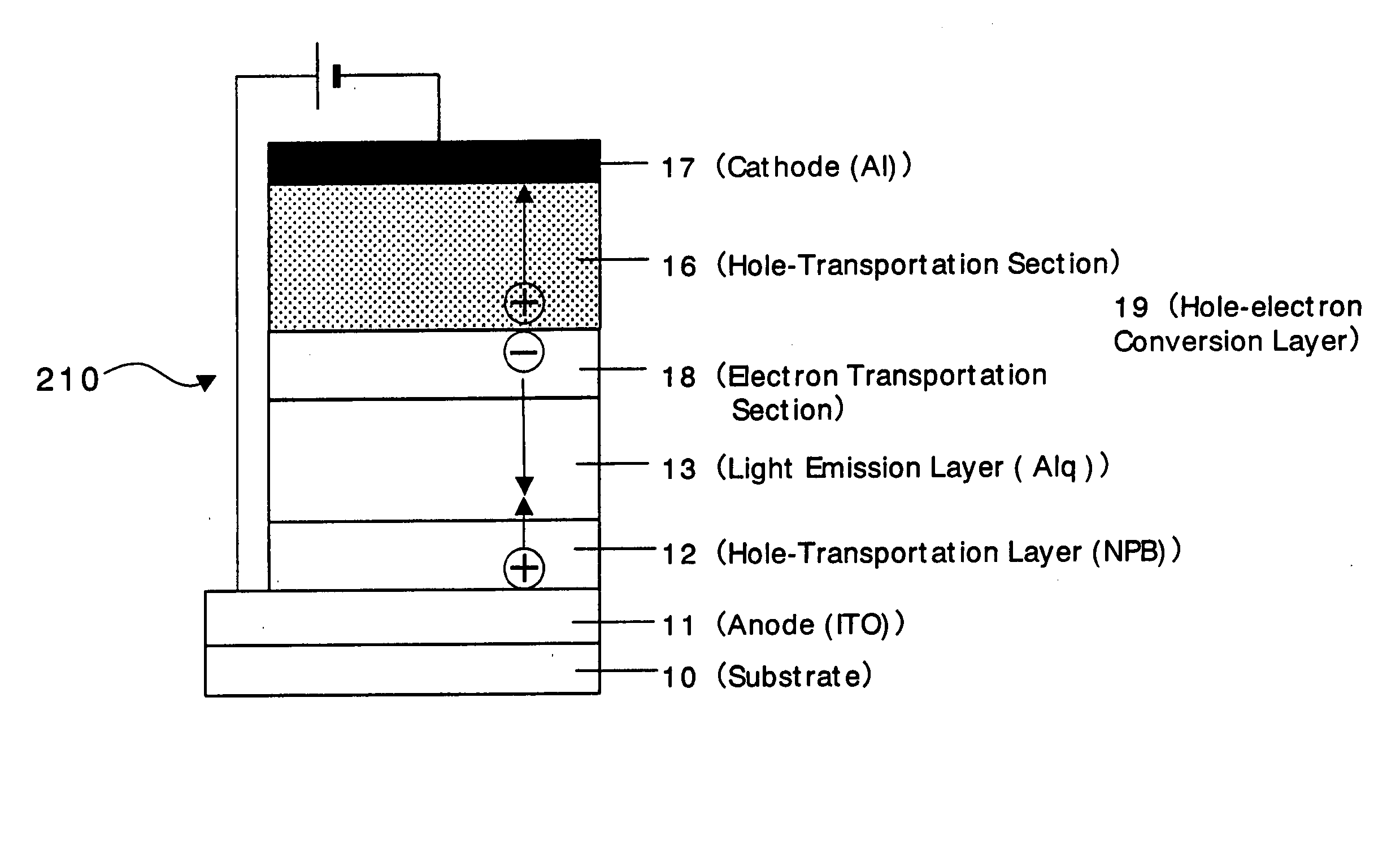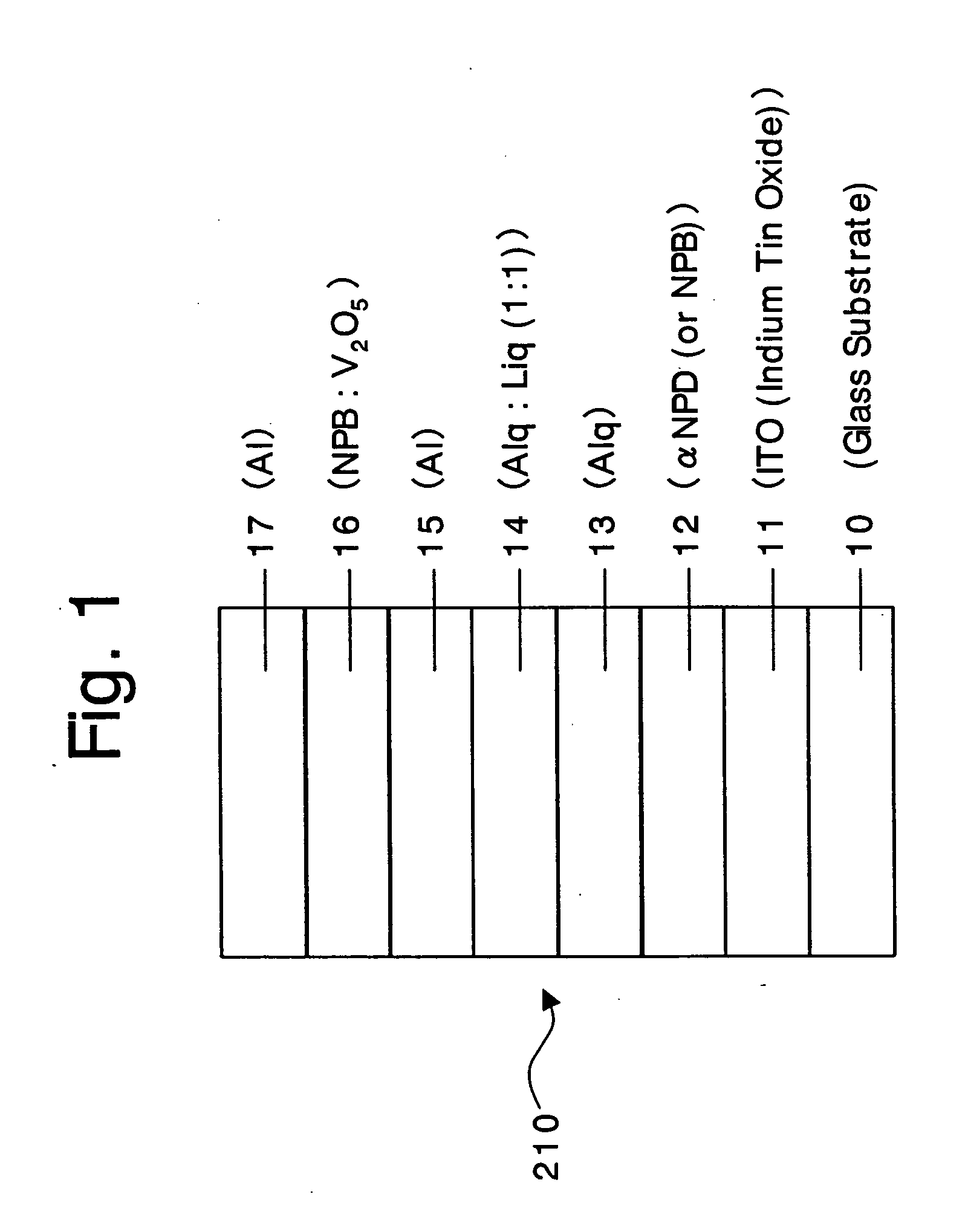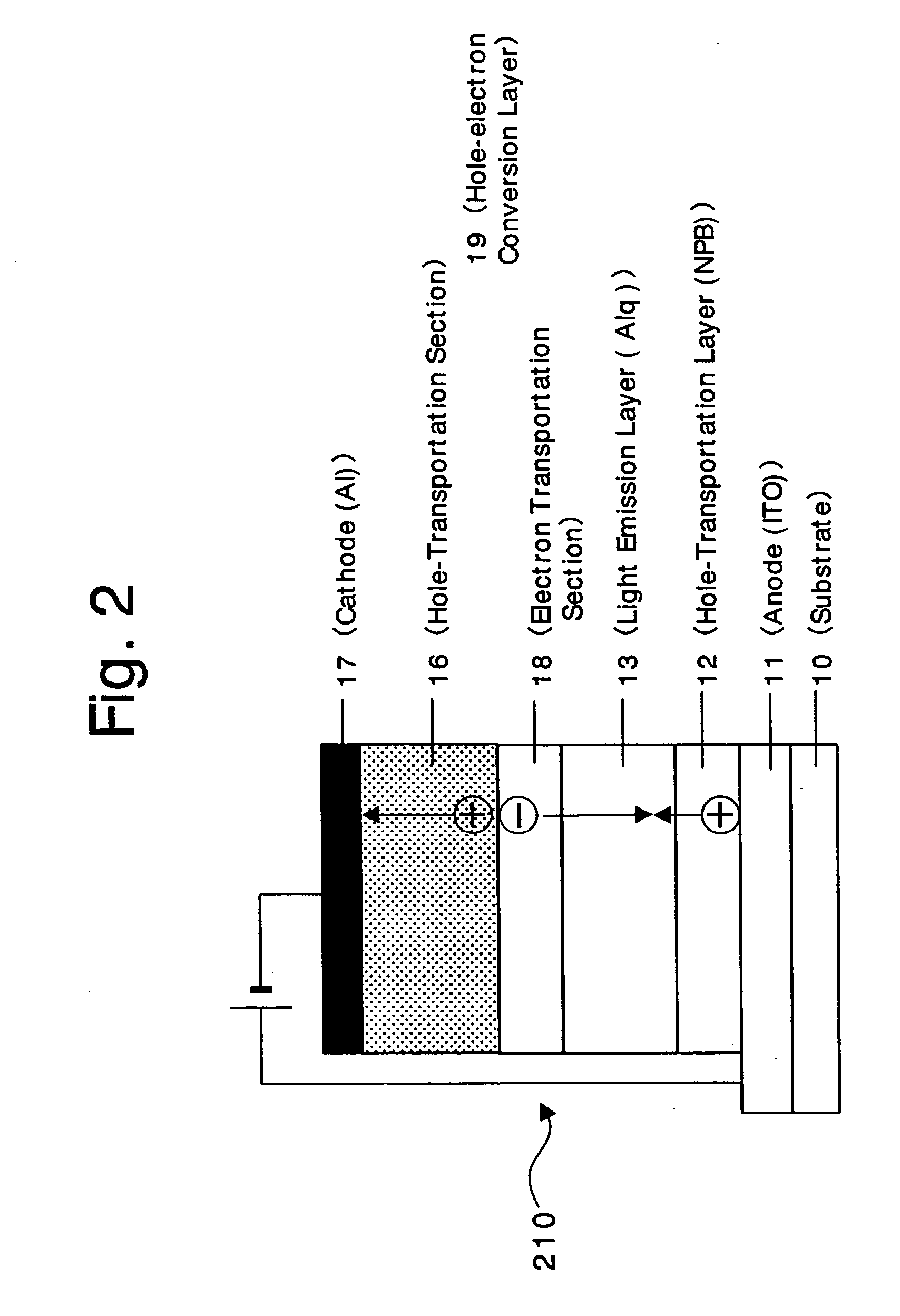Organic devices, organic electroluminescent devices, organic solar cells, organic FET structures and production method of organic devices
a technology of electroluminescent devices and organic solar cells, which is applied in the direction of discharge tube luminescnet screens, sustainable manufacturing/processing, and final product manufacturing, etc., can solve the problems of difficult electron transfer, power conversion efficiency cannot be substantially improved or changed, and mpe devices showing good performance like those plotted in fig. 24 cannot be realized with eas
- Summary
- Abstract
- Description
- Claims
- Application Information
AI Technical Summary
Benefits of technology
Problems solved by technology
Method used
Image
Examples
first embodiment
[0087] In the first embodiment of the present invention, a lithium complex of (8-quinolinolato) (hereinafter, referred to as “Liq”) represented by the following formula:
is used as an organic metal compound containing ions of low work function metals (for example, alkaline metals) having a work function of not more than 4.0 eV, typically alkaline metal ions, alkaline earth metal ions, rare earth metal ions and some transition metal ions, in the formation of the electron transportation section (thermal reduction reaction-generated layer).
[0088] Furthermore, an organic compound such as an aluminum complex of tris(8-quinolinolato) (hereinafter, referred to as “Alq”) represented by the following formula:
or bathocuproine (hereinafter, referred to as “BCP”) represented by the following formula:
is used as an organic electron-accepting (electron-transporting) compound. According to one suitable method for forming the electron transportation section according to the present inventio...
second embodiment
[0091] In the second embodiment of the present invention, as in the first embodiment described above, an organic metal complex containing alkaline metal ions such as Liq as an organic metal compound containing ions of low work function metals (for example, alkaline metals), an organic electron-accepting (-transporting) compound such as Alq and a thermally reducible metal such as aluminum can be used in the formation of the electron transportation section (thermal reduction reaction-generated layer). These three compounds can be simultaneously deposited and mixed (ternary co-deposition) to form the electron transportation section having the functions similar to those of the first embodiment. In this co-deposition process, when a deposition rate of the three compounds is suitably and precisely controlled, it becomes possible in the organic devices to obtain a layer having a high transparency and a good (low) resistivity comparable to that of the electron transportation layer having in...
third embodiment
[0092] In the third embodiment of the present invention, an organic metal complex containing rare earth metal ions such as an europium complex of tri(1,3-phenyl -1,3-propanedionato)mono(bathophenanthroline) (hereinafter, referred to as “Eu(DBM)3.BPEHEN”) represented by the following formula:
in which one of the ligands is a compound which shows the electron-accepting (-transporting) property by itself, for example, bathophenanthroline) (hereinafter, referred to as “BPEHEN”) represented by the following formula:
can be used in the formation of the electron transportation section (thermal reduction reaction-generated layer). The compound Eu(DBM)3.BPEHEN and a thermally reducible metal such as aluminum can be simultaneously deposited and mixed (binary co-deposition) to form the electron transportation section having the functions similar to those of the first and second embodiments. In this co-deposition process, when a deposition rate of the two compounds is suitably and precisely...
PUM
| Property | Measurement | Unit |
|---|---|---|
| work function | aaaaa | aaaaa |
| ionization potential | aaaaa | aaaaa |
| glass transition temperature | aaaaa | aaaaa |
Abstract
Description
Claims
Application Information
 Login to View More
Login to View More - R&D
- Intellectual Property
- Life Sciences
- Materials
- Tech Scout
- Unparalleled Data Quality
- Higher Quality Content
- 60% Fewer Hallucinations
Browse by: Latest US Patents, China's latest patents, Technical Efficacy Thesaurus, Application Domain, Technology Topic, Popular Technical Reports.
© 2025 PatSnap. All rights reserved.Legal|Privacy policy|Modern Slavery Act Transparency Statement|Sitemap|About US| Contact US: help@patsnap.com



